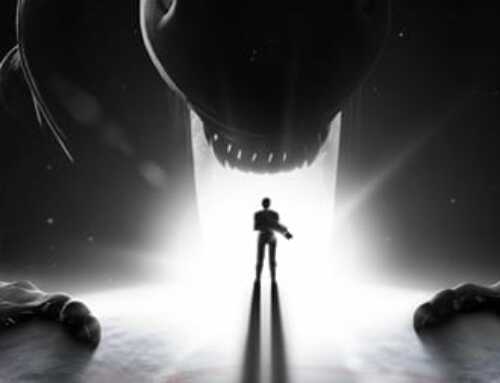There are no other games quite like “Strawberry Cubes.” It’s a retro puzzle platformer with a glitchy, morbid aesthetic. Instead of dealing in jump scares or monsters, “Strawberry Cubes” seems content to be unsettling, like trying to process a nightmare that doesn’t actually make much sense when you try to explain it to someone else.
“Strawberry Cubes” offers no up-front explanation for itself. Any hint of story presented to the player is done via cryptic imagery or strange bits of text appearing on the walls. There are a few fan theories as to what is actually going on, but the key element that stands out to me is that the game has something to do with a young girl dealing with the death of an older woman in her life. The game doesn’t seem to be all that interested in its own nightmare logic story (especially in comparison to “Yume Nikki” and its host of fan-sequels), instead “Strawberry Cubes” seems to use the story more as window-dressing for its odd functionality.
The graphics in “Strawberry Cubes” are incredibly stylized. At first, it is made to look as though it were simply an 8-bit platform game running on a modern computer. However, as the player progresses further into the dark, surreal depths of it, things start to get very glitchy. Items will flicker in and out of existence, walls will flash in strobes and text will become misspelled or replaced with meaningless symbols. Most of these fancy tricks would, of course, never run on an old 8-bit system but it’s an interesting use of the aesthetic, to set it up and then tear it down like that.
Much like the visual, the audio elements of “Strawberry Cubes” are largely a stylized retro affair. The music is mostly an 8-bit drone, when there is any at all, and the sound effects are largely similar bleeps and bloops. Much like with the graphics, there is an element of distortion to the sounds in the game, but it is definitely not as noticeable as the glitching graphics. It’s all in keeping with the overall presentation, but does leave a bit to be desired.
 The gameplay is where “Strawberry Cubes” is at both its best and worst. The game has very little in the way of instruction, just a readme file which tells the player a few of the basic controls, but then urges them to “try pressing other keys.” When the player gains a new ability, there is frequently some sort of hint on screen as to what button to press to activate it, but then the game does not really do a good job of telling you when you have acquired a new ability. There is a heavy emphasis on exploration, as the player guides the seemingly nameless girl through some sort of subterranean labyrinth, but most of that becomes trivialized once you realize that the abilities you gain allow you to create glitches that make exploring much easier, a fascinating application of the game’s glitch-heavy presentation. This seems to be an intentional mechanic. To add some amount of variety to this, areas in the game will frequently rearrange themselves. However, this is really not enough to balance out the fact that after a certain point it just becomes a monotonous slog.
The gameplay is where “Strawberry Cubes” is at both its best and worst. The game has very little in the way of instruction, just a readme file which tells the player a few of the basic controls, but then urges them to “try pressing other keys.” When the player gains a new ability, there is frequently some sort of hint on screen as to what button to press to activate it, but then the game does not really do a good job of telling you when you have acquired a new ability. There is a heavy emphasis on exploration, as the player guides the seemingly nameless girl through some sort of subterranean labyrinth, but most of that becomes trivialized once you realize that the abilities you gain allow you to create glitches that make exploring much easier, a fascinating application of the game’s glitch-heavy presentation. This seems to be an intentional mechanic. To add some amount of variety to this, areas in the game will frequently rearrange themselves. However, this is really not enough to balance out the fact that after a certain point it just becomes a monotonous slog.
It is difficult to tell what “Strawberry Cubes” set out to do and so it is difficult to say whether it has succeeded at whatever that may be. It definitely has some very large flaws, but it succeeds at creating a unique and haunting atmosphere. In other words, the game is a mess but it is a charming mess and probably worth the one dollar price tag.








